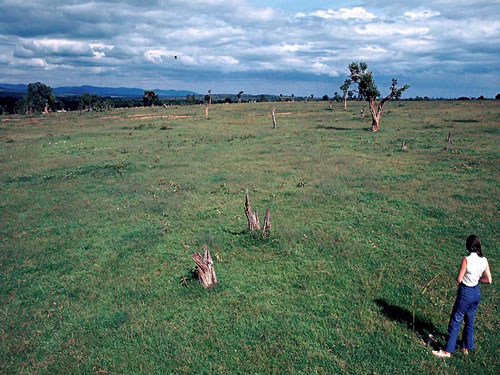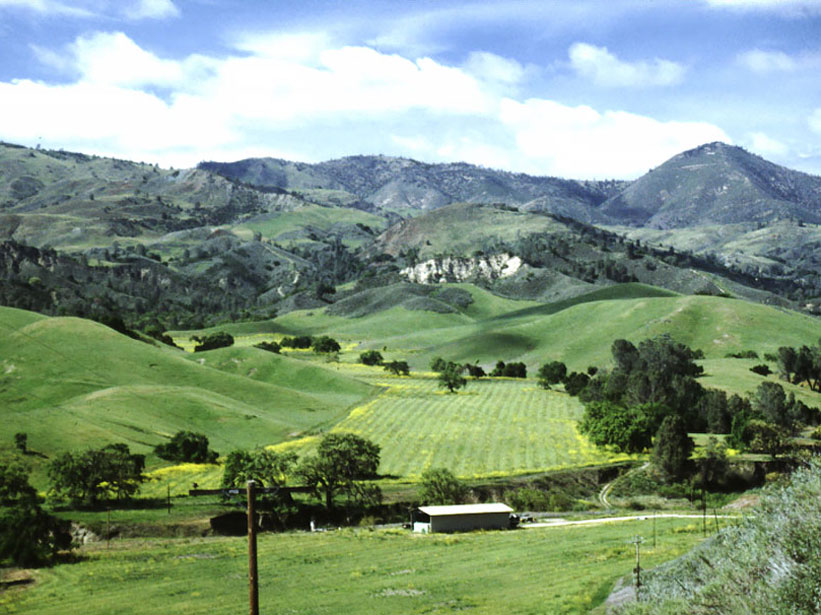Source: Journal of Geophysical Research: Earth Surface
When raindrops hit exposed soil on a hill, each individual drop has a bomb-like effect. Depending on their size and the speed at which they come into contact with the earth, raindrops can displace soil grains on impact. Detached soil particles are more likely to be carried away by runoff. In sloping areas, unabsorbed water can flow downhill in a thin sheet, carrying soil particles already loosened by raindrops. Over time, hills can be reshaped by both rain splash transport and sheetwash erosion.
Rain splash transports can account for the short, steep slopes with convex profiles in the Wyoming badlands, but in many other water-eroded landscapes in subhumid regions, hills have long convex portions that resist incision by channels. From these observations, Dunne et al. wondered if rain splash transport alone might generate these observed landscapes, given the constraints of time and climate.

To this end, the researchers were interested to see what conditions were necessary for rain splash to impact the shapes of hills. The team conducted field experiments to create an equation for rain splash transport that accounted for factors such as the type of soil, raindrop size, the mean annual rainfall in the area, and the slope of the hill. The equation was able to calculate sediment transport rates for a range of humid and subhumid climates.
The researchers applied the equation to known landscapes in eastern and southern Africa, where there are few other perturbations that could impact the formation of convex hills. They found that the equation predicting sediment transport did not match the actual shapes of hills. The scientists argued that in these instances, the only transport process that is sufficiently powerful to account for the impressively long, convex hill shapes is sheet erosion, rather than rain splash erosion. (Journal of Geophysical Research: Earth Surface, doi:10.1002/2015JF003737, 2016)
—Wudan Yan, Freelance Writer
Citation: Yan, W. (2016), Hitting the slopes, Eos, 97, doi:10.1029/2016EO048595. Published on 24 March 2016.
Text © 2016. The authors. CC BY-NC-ND 3.0
Except where otherwise noted, images are subject to copyright. Any reuse without express permission from the copyright owner is prohibited.

